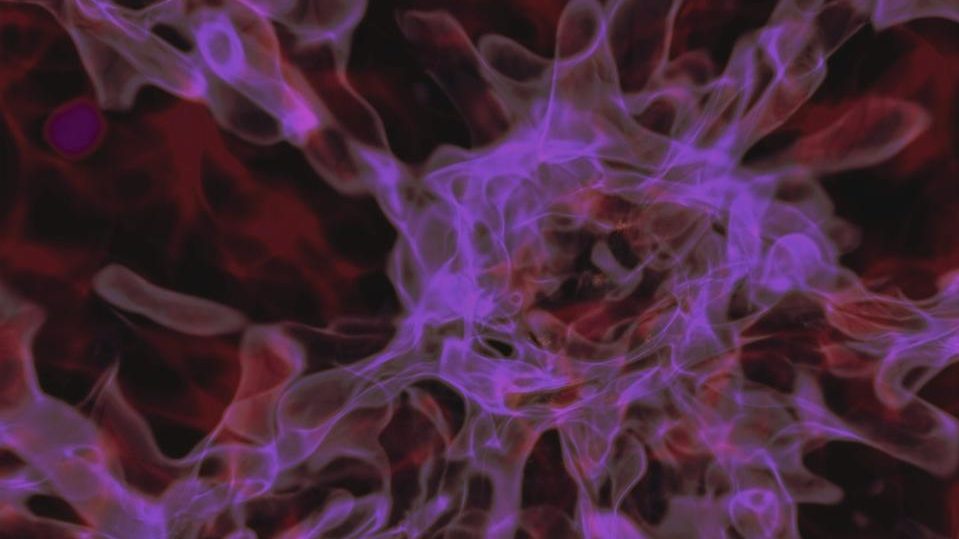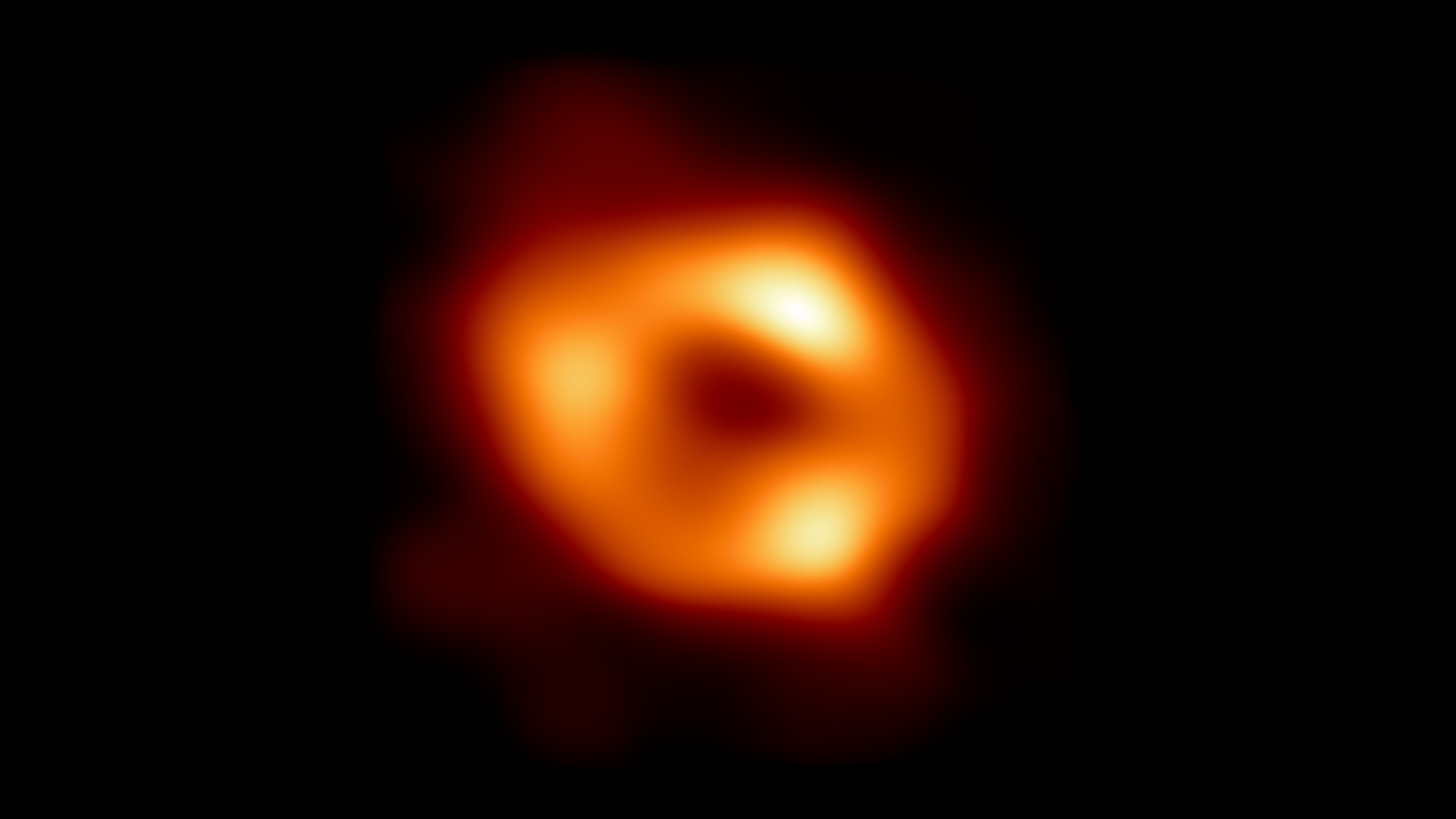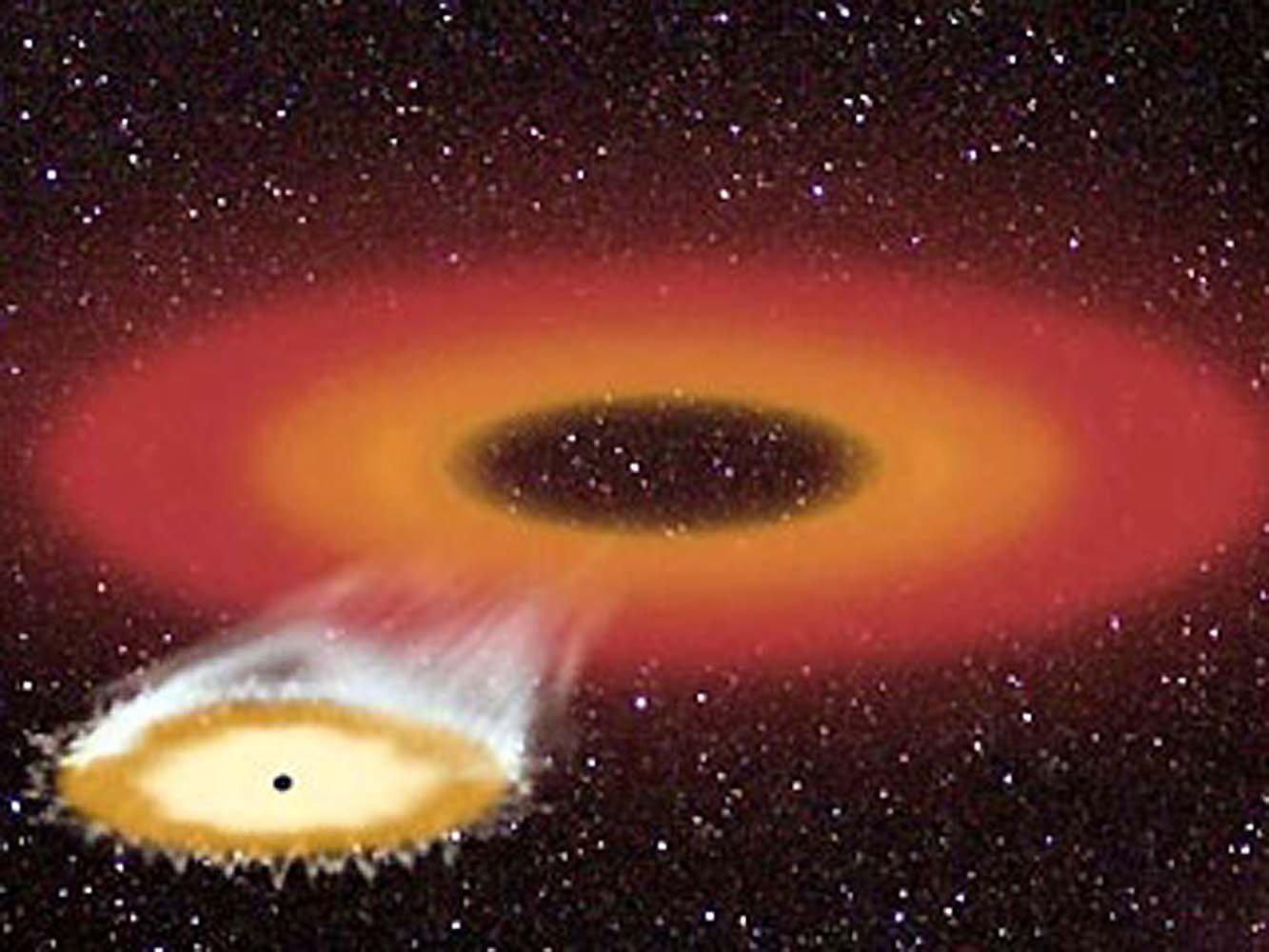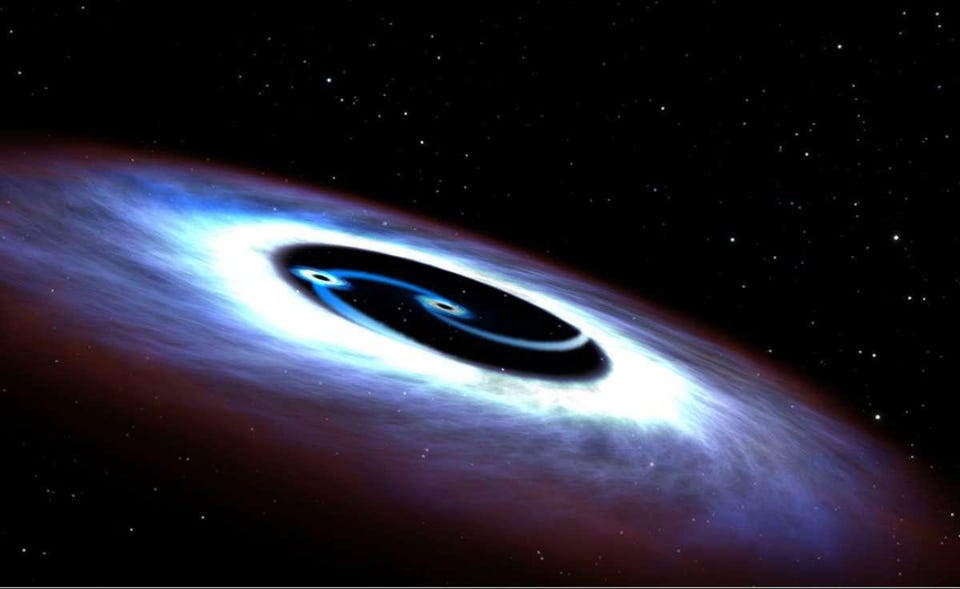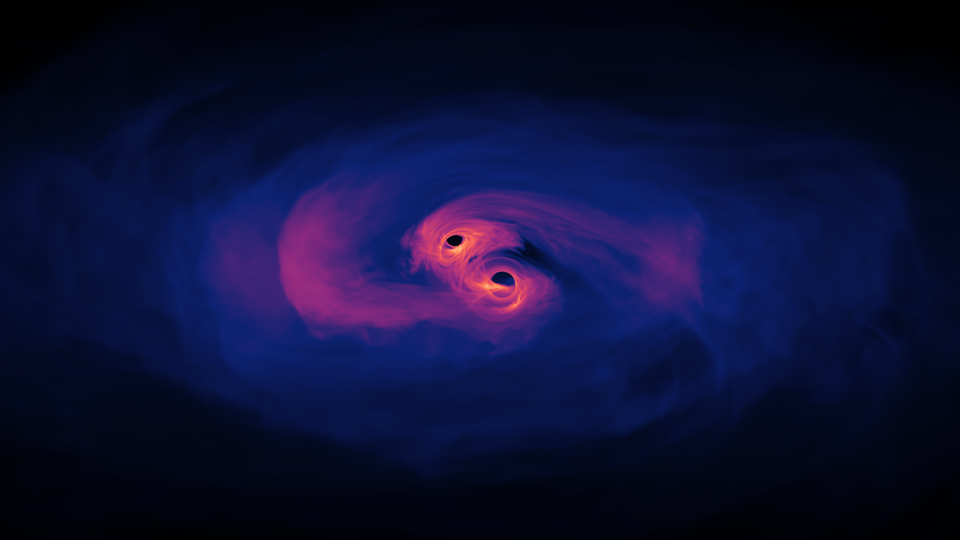Mystery of the first supermassive black holes solved at last!

- According to the Big Bang, the Universe came into existence some 13.8 billion years ago: hot, dense, rapidly expanding, and with only tiny imperfections to its otherwise uniform density.
- And yet, even when we look back at the first ~billion years of cosmic history, we find hundreds of black holes that weigh in at hundreds of millions or even billions of solar masses.
- It’s a longstanding puzzle: how did these black holes form so early and get so massive so quickly? After many years of research, we’ve finally cracked the Universe’s code.
What would you see if you could look into the past of every human being on Earth and see them as they were when they were 5 years old? You’d expect to see people possessing a wide variety of traits: some short and some tall, some heavy and some light in weight, some with larger feet and some with smaller feet, etc. Despite this variety, however, you’d fully expect that they’d all look like 5 year olds; you’d be shocked to find one that looked like a teenager, a young adult, or even a middle-aged adult. If this were the case, it would make you question — and rightly so — if what you were seeing was actually reflective of reality.
But in the Universe, this is precisely what occurs when we look at the earliest, brightest, most active galaxies that contain black holes. In theory, there should be a limit to:
- how early you can form the first stars (and, hence, the first black holes),
- how large of a “seed” black hole you can create from those first stars,
- and how quickly those black holes can grow in mass.
And yet, somehow, even in the first few hundred million years after the Big Bang, we see evidence for supermassive black holes that are far more massive than these limits would allow. Although it’s taken 19 years, a team of researchers, in a new paper in Nature, claims to have it all figured out. Here’s how we think the Universe actually does it!

The first thing you have to realize is that, at the very beginning of the hot Big Bang, the Universe is almost perfectly uniform. If you were to draw a sphere around any region of space — regardless of the size of your sphere — you’d find that you had enclosed a certain amount of mass. If you then took that same-sized sphere and enveloped 1000 different regions of exactly the same size, you’d find that:
- about 683 regions had between 99.997% and 100.003% of the average density,
- about 954 regions had between 99.994% and 100.006% of the average density,
- about 997 regions had between 99.991% and 100.009% of the average density,
- and all 1000 regions had between 99.988% and 100.012% of the average density.
In other words, at the start of the hot Big Bang, even the densest regions out there contain only ever-so-slightly more mass than the average.
As a result, along with the physics of how matter and radiation evolve in the early Universe, we can calculate how long we expect it will take for even the initially most dense regions to collect enough matter to form the first collapsed objects: stars and black holes among them. Although there are, of course, uncertainties here, we all agree that it takes tens of millions of years for the very first stars to form, and that the first major wave of star formation in the Universe won’t occur until between 100 and 200 million years have elapsed.

Once they do form, the most massive among these first stars are expected to live only for a short amount of time: 2 million years or less, before their cores collapse and they form black holes. Given that the most massive known, single star in the Universe today — R136a1 in the Large Magellanic Cloud’s Tarantula Nebula — weighs in at about ~260 times the mass of the Sun, it’s reasonable to assume, as a starting point, that the earliest black holes would also come in at perhaps a few hundred solar masses.
The big questions, then, are how early can we form these seed black holes, and how fast can they grow and gain mass as the Universe evolves?
If we stick to the early end of the time spectrum, we might be able to form them just 100 million years after the Big Bang. Then, if you ask how they grow, there’s a limit set by the laws of physics for how quickly a single mass can grow by accumulating the matter surrounding it: the Eddington limit. That allows us to come up with a prediction for how massive black holes should be allowed to get in a given amount of time. This is great, because then all we need to do is to go out and measure the masses of the supermassive black holes that power the earliest, most energetic quasars, and to see if our observations are consistent with what we predict.

And this is where the puzzle arises. We’ve now found quasars with supermassive black holes anywhere from 500 million to slightly over 1 billion solar masses that date back to a time where the Universe was just around ~700 million years old: a mere 5% of its current age.
When we do this, we find that we’re not just seeing the proverbial 5-year-old humans with a variety of heights, weights, foot sizes, and other properties. It’s as though some of those 5-year-olds are as tall as full-grown basketball players, reaching sizes that we didn’t expect them to reach until they were much, much older.
In other words, something doesn’t add up. These earliest supermassive black holes have grown larger than we expect that they should have given what we know about the Universe and how the laws of physics work over time.
In the recent past, many ideas have been floated to explain why, but they all fall into three categories.
- Perhaps we’ve got the seed-size and time right, but the growth wrong, and that black holes masses grow faster than we realize.
- Perhaps we have the seed-size all wrong, and that larger cosmic seeds are possible, driven by processes like structure formation or a much greater initial mass for the heaviest stars.
- Or, perhaps our picture is way off base, and the Universe was actually born with black holes that formed before any stars ever could: a set of primordial black holes.

For the first option, it’s true that non-spherical accretion can cause black holes to grow faster than the Eddington limit, but that type of accretion struggles to persist for long periods of time. Even if we allow for bursts of faster-than-expected growth, it remains very difficult to explain how so many supermassive black holes — as there are now some ~200 of them discovered at very early cosmic times — all experienced what should be rare and transient conditions for such persistent epochs.
For the third option, this starts off as a remarkably unattractive proposition: we’d have to postulate some new, never-before-seen physics to create a “spike” in the mass spectrum at a particular value. In order to make a primordial black hole, you need to have a region of space that’s more dense than 168% of the cosmic average in the early stages of the expanding Universe. But remember: we just said that about ~100% of all early regions in space are between 99.988% and 100.012% of the average density. Unless you invent some new way to have ultra-large-magnitude fluctuations on a very small and specific cosmic scale (and no other), this scenario cannot come to pass.

However, there’s still a hope that this problem — or rather, this apparent problem — may simply turn out to result from ordinary, mundane, run-of-the-mill astrophysics. Sure, a seed black hole of a few hundred solar masses at an epoch of ~100 million years after the Big Bang won’t quite do the job, but if we could make seed black holes that were just a hundred times more massive at that same, early epoch, that would provide a way out. If the Universe could give birth to a seed black hole that was a few tens of thousands of solar masses just ~100 million years after the Big Bang, that would resolve the tension.
The composition of the Universe, back before the very first stars ever formed, provides a tremendous clue that this might be possible. Today, stars form from the collapse of gas clouds, made mostly of hydrogen and helium, but peppered with a small amount of heavier elements: oxygen, carbon, nitrogen, neon, silicon, sulfur, calcium, magnesium and iron, among others. It’s primarily those heavy elements that allow those gas clouds to cool and collapse, giving rise to stars with an average mass of 40% that of the Sun. Sure, we might be able to form a few very massive stars with masses of 50, 100, or even 200 solar masses or more, but just a tiny fraction of them will be massive enough to go supernova and/or leave a black hole remnant behind.
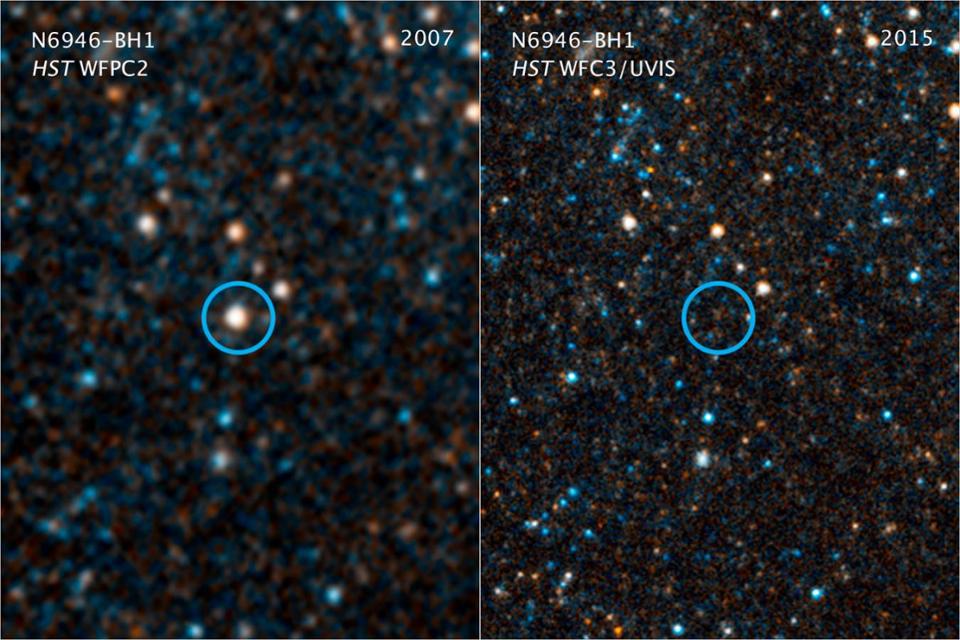
Early on, however, star-formation would have had to proceed differently. Without any of those heavy elements present, the most efficient way to cool clouds of gas that are attempting to gravitationally contract is still tremendously inefficient: to have neutral, molecular hydrogen radiate that heat away. With such an inefficient means of cooling at play, molecular clouds have to get much more massive in order to collapse, and the expected stars they’ll form are ~25 times more massive than today’s stars, on average.
It might be quite common to form stars of many hundreds or even a few thousand solar masses in these very early stages, and those stars might not even go supernova; it’s plausible that they’ll directly collapse, leading to a scenario where 100% of the star’s mass becomes a black hole.
Given that:
- we’ve seen stars directly collapse,
- in the environments where the most massive stars reside, we find many stars of comparably high masses,
- and that the first stars formed from ultra-massive molecular clouds with (likely) many stars of ~1000 solar masses,
it seems reasonable that, perhaps, many “seed” black holes cloud form, and those seeds could then merge together, leading to a starting black hole that just might, potentially, start off with enough mass for us to wiggle our way out.
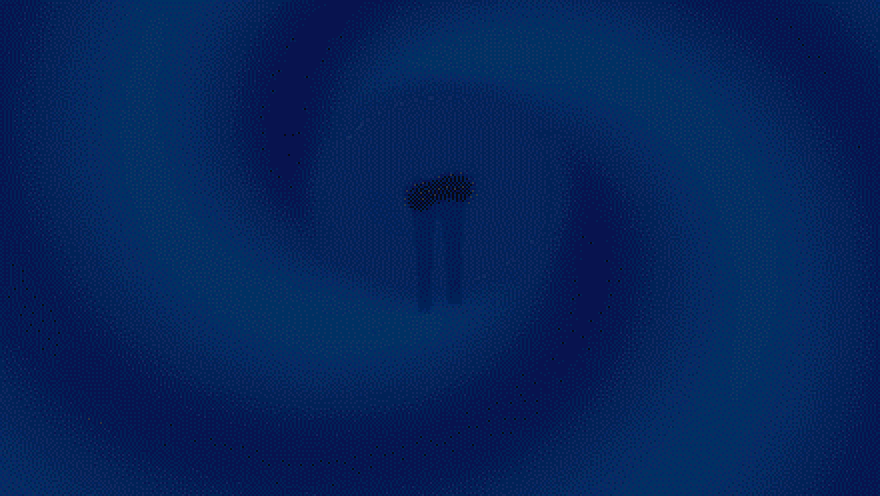
But even this scenario, which gets us quite a bit closer to the desired outcome, poses a difficulty: how do we get these seed black holes to all merge together quickly enough without gravitational interactions either forcing an ejection or mutual interactions clearing out the galactic center from the needed material for accretion?
There needs to be something else. Something else has to come into play if we’re to transform this conundrum from relying on hand-waving to relying on solidly understood physics and astrophysics. And that’s precisely where the new study, led by Daniel Whalen of the University of Portsmouth, comes in.
By simulating how structure forms in the early Universe, including dark matter, early star clusters, and streams of neutral gas (i.e., normal matter), and watching how proto-galaxies and star clusters merge together amidst the backdrop of the emerging cosmic web, cosmologists can monitor where large, massive collections of matter can gather in one particular location. A few years ago, this method was able to reveal that cold, ultramassive streams of gas would collide at the nexus points of this proto-cosmic web, and that gas could rise to high densities in small volumes, containing as much as ~100,000 solar masses in one particular location.
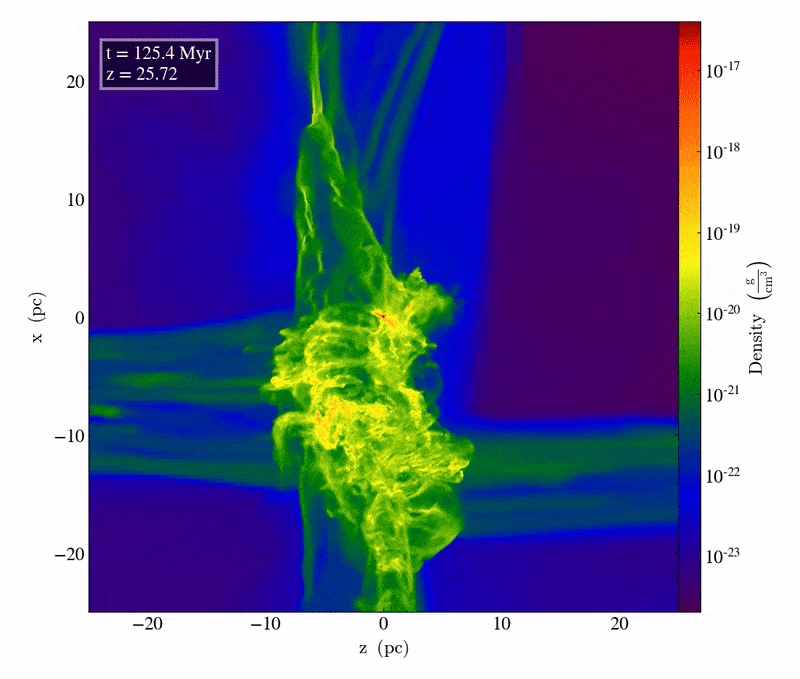
But these environments are rare, and cannot explain the ~200+ very massive quasars we’ve discovered back when the Universe was just ~5% of its current age or so. That’s where the new simulations by the Portsmouth group comes in. The team was able to show that where strong, cold accretion flows occur and converge, they can all of a sudden trigger the all-at-once collapse of dense clouds of normal matter, creating either short-lived stars or direct-collapse black holes that range from 30,000 to 40,000 solar masses.
As the simulation snippet, above, illustrates, there’s no need for any fine-tuning mechanisms to trigger this phenomenon. Whereas previous studies invoked ultraviolet backgrounds, supersonic streaming motions, or some variety of atomic and molecular cooling, this new research showed that these cold gas flows lead to a copious amount of turbulence, which prevents star-formation from occurring entirely until a critical mass is reached. Upon crossing that mass threshold, however, the dense region suddenly collapses, which can trigger the formation of individual objects — stars or black holes — of up to 40,000 solar masses. For the first time, using known, non-exotic physics alone, a team has successfully shown that seed black holes of the needed mass can be created just slightly over 100 million years after the Big Bang.

This theoretical development couldn’t come at a better time: right as JWST’s science operations are about to begin. One of its unprecedented capabilities will be to examine the earliest black holes in their galactic environments, shedding light as to how they formed and grew up. This novel scenario, where cold gas streams collide to produce monster-sized stars that can quickly form black holes up to tens-of-thousands of solar masses, will soon be put to the ultimate test. As Whalen himself noted:
“The only primordial clouds that could form a quasar just after cosmic dawn, when the first stars in the universe formed, also conveniently created their own massive seeds. This simple, beautiful result not only explains the origin of the first quasars but also their demographics: their numbers at early times. The first supermassive black holes were simply a natural consequence of structure formation in cold dark matter cosmologies: children of the cosmic web.”
For nearly two full decades, astronomers have puzzled over just how these supermassive black holes, found in the Universe’s most distant quasars, grew up to be so big so fast. This new result strongly supports a novel, gas-driven scenario that requires no new physics. In the next few years, and perhaps even the next few months, we’ll get to find out precisely how the Universe’s most massive, early objects grew up.
